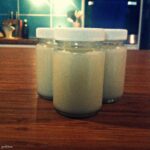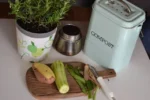Introduction
This is the fourth post in my series on how to do your own research into cosmetic ingredients in Australia. My goal? To help you feel confident and empowered when choosing products for yourself and your family—because I know how overwhelming those long ingredient lists can be!
If you’re new here, you might want to check out my earlier posts:
- Why You Should Be Informed About Cosmetic Ingredients
- How Cosmetics Are Regulated in Australia
- Understanding Ingredient Naming Conventions
Why I Started Researching Cosmetic Ingredients
As a mum and someone passionate about natural wellness, I’ve always wanted to make the best choices for my family. But I quickly realised that reading a skincare label is only the first step—actually understanding what those ingredients mean for our health and the environment is a whole different story.
I’ve spent years digging through databases, reading scientific studies, and comparing products. Along the way, I’ve learned which resources are trustworthy, which ones need a pinch of salt, and how to balance expert advice with my own values and intuition. I hope these tips help you feel just as empowered!
Where I Start: My Go-To Cosmetic Ingredient Resources
1. Personal Care Products Council – CosmeticsInfo.org
This is usually my first stop when I spot a new or unfamiliar ingredient. CosmeticsInfo.org explains what the ingredient is, why it’s used, and shares safety info from both EU and US perspectives. I love that it’s clear and easy to navigate, especially if you’re just starting out.
2. Paula’s Choice Ingredient Dictionary
When I want a quick, plain-English summary, I turn to Paula’s Choice. Their ingredient dictionary is honest, straightforward, and gives everything a simple rating. It’s not exhaustive, but it’s a great way to get a sense of whether an ingredient is worth a closer look.
3. EWG Skin Deep® Cosmetics Database
I know the EWG’s Skin Deep database is popular for a reason—it’s easy to use, and their hazard ratings are handy for a quick check. But I also know some experts question their scoring system and scientific rigour. So I always use EWG as a starting point, not the final word. Cross-checking is key!
4. Chemical Maze App
This Aussie classic is a lifesaver when I’m shopping. The Chemical Maze app lets you search food additives and cosmetic ingredients, giving you risk levels, uses, and potential side effects. It’s like having a pocket guide for clean living.
- a risk level,
- function and uses of the ingredient
- potential negative effects,
- symptoms and
- ailments.
It’s great to be able to whip out your phone to check label information for clean ingredients while you’re shopping.
5. INCIDecoder
For a truly science-based breakdown, I love INCIDecoder. It translates those long, confusing ingredient lists into plain language and links to research. Perfect for when you want to dig a little deeper.
Technical Databases & Australian Regulations
I always check Australian-specific sources, too:
- Australian Inventory of Industrial Chemicals (AICIS): The official list of chemicals approved for use in Australia.
- Therapeutic Goods Administration (TGA) Ingredient Database: Especially useful for products that blur the line between cosmetics and therapeutics (like sunscreens or medicated creams).
- INCIDecoder: For global ingredient clarity and scientific references.
If you’re ever unsure, search both the AICIS and TGA databases. And remember: if you can’t find an ingredient, don’t assume it’s safe—always keep digging.
My Family’s Approach: Balancing Information and Intuition
After all this research, how do I decide what’s right for my family?
For us, it’s about balance. We aim for natural, minimally processed products, but I also believe in flexibility and not stressing over every single ingredient. Here’s what works for us:
- Eat a nutrient-dense diet and grow our own produce when possible.
- Choose local and organic when it fits our budget.
- Limit unnecessary chemicals in our home and on our skin.
- Protect ourselves naturally from the sun and insects, but use higher SPF or stronger repellents when truly needed.
- Read labels, research, and trust my gut. If something doesn’t feel right, I skip it.
I want my kids to have a healthy relationship with their bodies and the environment—one built on knowledge, not fear.
Transparency in Our Products
If you’re curious, Green Foot Mama balms are labelled with both INCI and common names. We use organic food-grade ingredients, natural beeswax, and pure essential oils. Our Organic Sun SPF15 Moisturiser uses non-nano uncoated zinc, and Organic Defence Outdoor Moisturiser features essential oils that naturally deter insects. I believe you deserve to know exactly what’s in the products you use!
FAQs: How to Research Cosmetic Ingredients in Australia
How can I check if a cosmetic ingredient is safe in Australia?
Start with the AICIS Inventory and the TGA Ingredients Table. For a second opinion, cross-check with consumer-friendly sites like INCIDecoder and CosmeticsInfo.org.
What’s the best way to understand skincare labels?
Learn about INCI naming conventions and use resources like INCIDecoder or CosmeticsInfo.org to translate ingredient lists into plain English.
Are natural and organic ingredients always safe?
Not always! Even natural ingredients can cause allergies or irritation. Always patch test and look for scientific evidence—don’t rely on buzzwords alone.
Conclusion
Doing your own research into cosmetic ingredients in Australia can feel like detective work, but it’s so worth it for your peace of mind. Use trustworthy databases, cross-check your findings, and don’t forget to trust your instincts and values. You know your family best!
Do you have a favourite resource, or a story about how you chose a product for your family? I’d love to hear from you—share your experiences or questions in the comments!




